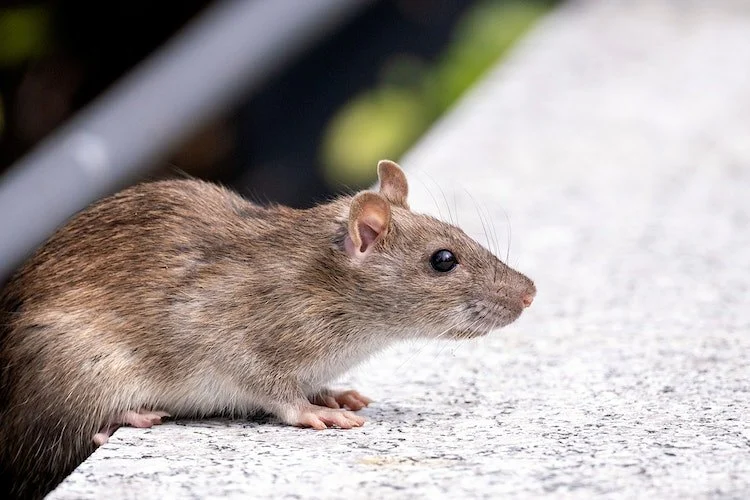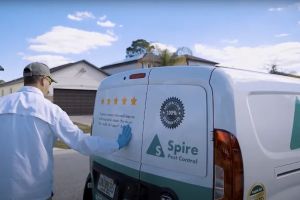
- 1. Why Inspecting Crawl Spaces for Rodents is Important
- 2. Signs of Rodent Infestation in Crawl Spaces
- 3. Tools Needed for Crawl Space Inspection
- 4. Step-by-Step Guide to Inspecting Crawl Spaces for Rodents
- 5. How to Prevent Rodents in Crawl Spaces
- 6. When to Call Professionals for Rodent Control
1. Why Inspecting Crawl Spaces for Rodents is Important
Rodents, such as rats and mice, are more than just a nuisance; they can cause serious damage to your home. Crawl spaces, with their dark, secluded environment, are ideal habitats for rodents looking for shelter and food. If left unchecked, a rodent infestation in the crawl space can lead to structural damage, electrical hazards, and contamination from urine and droppings.
Inspecting your crawl space regularly for signs of rodents is essential to prevent costly repairs and potential health risks. A timely inspection can help you catch an infestation early, preventing further damage and ensuring the safety of your home and family.

Viking Pest Control
BernardsSomerset CountyNew Jersey
106 Allen Rd Suite 310, Basking Ridge, NJ 07920, USA
2. Signs of Rodent Infestation in Crawl Spaces
Before you conduct an inspection, it’s important to understand the typical signs of rodent activity in crawl spaces. These indicators will help you determine if rodents are present:

Spire Pest Control Richmond
MidlothianChesterfield CountyVirginia
270 N Otterdale Rd Building A Unit F, Midlothian, VA 23113, USA
2.1 Droppings
Rodent droppings are one of the most common signs of infestation. In crawl spaces, you’ll often find small, dark pellets near entry points or nesting areas. These droppings can carry harmful diseases, so it’s crucial to clean them up properly.
2.2 Gnaw Marks and Damage
Rodents need to gnaw on various materials to keep their teeth trimmed. In crawl spaces, look for gnaw marks on pipes, insulation, wooden beams, and wiring. If left unchecked, rodents can cause significant damage to your home’s infrastructure.
2.3 Nests and Burrows
Rodents typically build nests using shredded paper, fabric, insulation, and other soft materials they find. In your crawl space, look for any signs of burrows or nests, which may indicate that rodents have set up a home there.
2.4 Strange Noises
If you hear scratching or scurrying sounds coming from the crawl space, it’s likely a sign of active rodent activity. Rodents are nocturnal, so you may hear noises late at night or early in the morning.
2.5 Unpleasant Odors
Rodent infestations often lead to unpleasant smells from urine, feces, and dead rodents. A strong, musky odor is a common sign of rodent activity in your crawl space.
3. Tools Needed for Crawl Space Inspection
Inspecting a crawl space for rodents requires some basic tools to ensure that you can access the area safely and thoroughly. Here’s a list of items you’ll need:
3.1 Flashlight
A good, powerful flashlight is essential for inspecting dark crawl spaces. Make sure the flashlight is bright enough to illuminate all corners of the crawl space so you can spot any signs of rodent activity.
3.2 Protective Gloves
When handling droppings, nests, or other potentially hazardous materials, wear thick, protective gloves. Rodent droppings can carry diseases, so gloves are essential for keeping yourself safe during the inspection.
3.3 Pest Control Bait or Traps
While inspecting, you may want to set up bait or traps to catch any rodents that may be in the area. These tools can help you confirm the presence of rodents and take immediate action.
3.4 Safety Mask
Wearing a safety mask will protect you from inhaling dust, spores, and harmful bacteria found in rodent droppings and urine. It’s a simple but effective way to ensure your health while inspecting the crawl space.
4. Step-by-Step Guide to Inspecting Crawl Spaces for Rodents
Now that you’re prepared with the right tools, here’s a step-by-step guide to help you inspect your crawl space for rodents:
4.1 Step 1: Access the Crawl Space
Locate the access point to your crawl space. This may be a hatch or door in your basement, garage, or exterior of your home. Ensure that the access area is clear and safe to enter.
4.2 Step 2: Examine the Entry Points
Once inside the crawl space, start by examining the entry points. Look for gaps or cracks in the foundation, vents, or pipes that rodents could be using to gain access. Seal any openings you find to prevent further entry.
4.3 Step 3: Look for Signs of Rodents
As you move through the crawl space, check for signs of rodent activity such as droppings, gnaw marks, nests, or burrows. Pay special attention to corners, edges, and dark areas where rodents are likely to hide.
4.4 Step 4: Check for Damage
Inspect insulation, wiring, and plumbing for damage caused by rodents. Gnaw marks, shredded materials, and chewed wires are clear signs that rodents have been active in your crawl space.
4.5 Step 5: Set Traps or Bait
If you find signs of rodents, set up traps or place bait in the crawl space to help catch them. Check the traps regularly and dispose of any captured rodents safely.
5. How to Prevent Rodents in Crawl Spaces
Once you’ve inspected and identified any rodent activity, the next step is to prevent further infestations. Here are some effective strategies:
5.1 Seal Entry Points
Ensure that all cracks, gaps, and holes in your foundation, vents, and pipes are sealed with materials like steel wool, caulk, or wire mesh. This will help keep rodents from entering your crawl space.
5.2 Install a Vapor Barrier
A vapor barrier can help reduce moisture in your crawl space, making it less appealing to rodents. It also helps to keep the area dry, preventing other pests like termites from taking residence.
5.3 Regular Inspections
Perform regular inspections of your crawl space to check for signs of rodents and other pests. Early detection is key to preventing further damage and ensuring that your home stays safe and healthy.
6. When to Call Professionals for Rodent Control
If your inspection reveals a significant rodent infestation or if you’re unable to safely inspect or handle the issue, it may be time to call in a professional pest control service. Professionals have the knowledge and experience to deal with larger infestations and can implement more advanced solutions, such as bait stations or traps, and help with the safe removal of rodents from your home.
At PestControlHub, we can connect you with trusted professionals who specialize in rodent control and prevention. They can help ensure that your crawl space remains free from rodents and other pests for good.







 Wildlife Resolutions4.0 (443 reviews)
Wildlife Resolutions4.0 (443 reviews) Pest Marshals of Toledo5.0 (2 reviews)
Pest Marshals of Toledo5.0 (2 reviews) LS Rodent Proofing & Pest Control Service5.0 (4 reviews)
LS Rodent Proofing & Pest Control Service5.0 (4 reviews) Best Termite & Pest Control4.0 (16 reviews)
Best Termite & Pest Control4.0 (16 reviews) Varment Guard Wildlife Services5.0 (28 reviews)
Varment Guard Wildlife Services5.0 (28 reviews) Pestban Inc4.0 (394 reviews)
Pestban Inc4.0 (394 reviews) How to Use Monitors to Detect Pest Entry: A Comprehensive Guide
How to Use Monitors to Detect Pest Entry: A Comprehensive Guide How to Predict Which Pests Will Invade Next – Smart Pest Forecasting for the U.S.
How to Predict Which Pests Will Invade Next – Smart Pest Forecasting for the U.S. How to Conduct a Pest Risk Assessment at Home – Expert Guide
How to Conduct a Pest Risk Assessment at Home – Expert Guide How to Block Pest Entry Around Deck Joists: Effective Solutions
How to Block Pest Entry Around Deck Joists: Effective Solutions How to Safely Use Fumigation Methods: A Comprehensive Guide for Homeowners
How to Safely Use Fumigation Methods: A Comprehensive Guide for Homeowners Why Pests Are More Active After Rain: Understanding the Link Between Weather and Pest Behavior
Why Pests Are More Active After Rain: Understanding the Link Between Weather and Pest Behavior